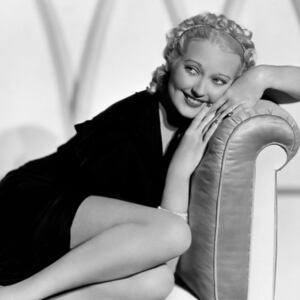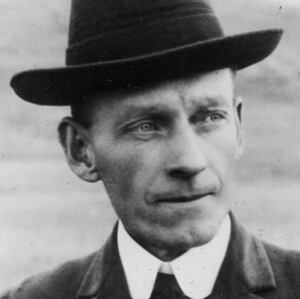“Every other topic, however important, has been sunk into insignificance, in this community, by the circumstances which have just come to light in connection with the mysterious disappearance of Dr. George Parkman,” read the lead in The Liberator on Dec. 7, 1849.
That Friday, the abolitionist newspaper covered the debate over whether California should be admitted as a state, the status of the Women’s Suffrage Movement, and reports on the International Peace Congress in Paris. But the story readers couldn’t put down was the latest update in the case of the missing Boston Brahmin.
On Friday, Nov. 23, 1849, Dr. George Parkman left his home to walk to the grocery store. He bought a head of lettuce, left his purchase in a bag with the promise to collect it later, and then, according to an eyewitness, walked into Harvard Medical College. He was never seen again.
A week later, a portion of his dismembered remains were discovered in the privy connected to both the dissection room used by medical students and the lab of another prominent member of the medical and local communities, Dr. John Webster. The latter had the opportunity—a meeting he admitted to having with Parkman on the day of his disappearance; the means—he worked in a medical college full of scalpels and furnaces; and, it was soon discovered, the motive—he owed Webster a lot of money.
The trial that followed was an international sensation. Webster made an art out of denial and blame, but the preponderance of evidence was against him. In less than a year, he was convicted and hanged for the murder of his former classmate and fellow Bostonian.
Given its grisly and sensational nature, it’s no surprise that the murder of Dr. Parkman gripped American society. But what really vaulted the story into the annals of U.S. scandal is the prominent status of the two men at the heart of the affair.
One of the most difficult problems the rapidly multiplying medical schools faced in the 19th century was procuring cadavers on which their students could learn. It was an open secret that many schools resorted to buying their “supplies” from body snatchers, who would rob the graves of recently buried individuals.
Harvard had gained some uncomfortable attention a year earlier when the medical school became embroiled in a mini-scandal after the dean had refused to buy the body of a woman who, upon closer examination, was not only a person freshly dead rather than one in the slightly more proper condition of being a corpse recently exhumed, but was also found to have died from an illegal abortion.
While Harvard was not complicit in the snatching of Sarah Furber, the incident shed light on the many anonymous individuals who ended up—some legally, others illegally—under the scalpels of students around the country.
Parkman may have ultimately ended up as just another dissected body among many in the medical school, but anonymity was never meant to be his fate. When he went missing in 1848, he was one of the richest men in Boston and the biggest donor to Harvard Medical College. In addition to being a doctor trained by the school he played benefactor to, Parkman was also a real estate maven who largely gave up his career in medicine when he took control of his powerful family’s business interests.
Parkman first met Webster when the two were classmates in medical school. Webster took a more conventional path through their chosen profession, starting a private practice before becoming a chemistry professor at his alma mater.
While Webster was also from an elite Boston family, his was no longer quite as well-to-do as that of his former classmate. He also wasn’t as adept at managing his personal finances. So when he inevitably ran short on funds, one of the people he turned to for a loan was Parkman.
Fast-forward to a chilly late November day in 1848. When Parkman deviated from his normally rigid schedule by both failing to return home or to collect his lettuce from the store, his family sounded the alarm. Posters were plastered around town, a $3,000 reward was offered, and the police department came out in full force for one of the city’s leading sons.
As one day passed and then another, the authorities began to face the possibility that Parkman had been the victim of a sordid crime. He was known to regularly walk the streets, checking on his properties and collecting money from his tenants along the way. (This habit earned him the nickname “the pedestrian.”) Theories flew—maybe he had succumbed to a mugging by someone who knew he often had cash on him while making these rounds.
The police dredged both the Charles River and Boston Harbor. Then, they searched the medical school after determining that Parkman’s last reported whereabouts were at Harvard. When they learned that he had met with Webster on the day of his disappearance, they paid special attention to the professor’s lab.
But their investigation failed to turn up even a hair of the Bostonian. They were stumped.
Inside Harvard Medical College, however, one man was beginning to grow suspicious. Ephraim Littlefield was the janitor of the school, and he lived on the premises near Webster’s lab. In a twist of fate that some would called coincidence, others motive, he also made a little money on the side by serving as a middleman in procuring corpses for the school.
A series of odd events had caught Littlefield’s attention, he later testified. First, Webster had gifted him a turkey for the Thanksgiving holiday, which was unlike the doctor, who was not close with the janitor.
Then, Webster had locked his lab during the break, a move that was unusual and prevented Littlefield from carrying out his cleaning duties. With suspicions rising, Littlefield forced his way into the lab where he found evidence that an incredibly strong fire had been built in the furnace. Finally, there was the growing stench.
Littlefield determined that the only place that Webster could have possibly concealed the body was in the privy, a space that started on the floor with the two labs—Webster’s and the students’ dissecting room—and then dropped down in order for the river’s rising tide to regularly clean it out.
On Thanksgiving Day, Littlefield began to chip away at the bricks in the lower part of the privy. When he finally got through, he saw what would eventually be identified as a thigh.
“It’s actually kind of difficult because of course there’s all kinds of cadavers and parts of cadavers in that building. And particularly without a head or without any clothing or anything like that there, they really don’t know who it is,” Paul Collins, author of Blood & Ivy: The 1849 Murder That Scandalized Harvard, told the “Criminal” podcast. “But what they do know is that it’s not supposed to be there and that this is the last place that Parkman was seen.”
Littlefield called the police, who discovered more human remains in the privy, as well as parts of a body in a box in Webster’s lab. The cops arrested the professor on suspicion of murder.
The greater Boston society erupted at the scandal. According to Collins, public opinion divided by location. Cambridge residents were shocked and horrified at the injustice being done to the obviously innocent Webster; Bostonians, on the other hand, knew a guilty man when they saw one, no matter how high his status.
“You will see by the papers what dark horror overshadows us like an eclipse,” Fanny Longfellow, wife of poet Henry Wadsworth Longfellow, wrote at the time. “Of course we cannot believe Dr. Webster guilty, bad as the evidence looks.”
Harvard librarian John Langdon Sibley based his disbelief on “the standing of Dr. Webster, his uniform tenor of conduct since the disappearance of Dr. Parkman, his artlessness & unfamiliarity with crime of any kind.” He went on to write in his journal that the news had so overtaken society that “people cannot eat; they feel sick.”
While his colleagues and neighbors may have been convinced of his innocence, Webster’s own behavior didn’t help his case. When he was first arrested, he tried to commit suicide by strychnine poisoning while in police custody. Unfortunately, according to “Criminal,” the doctor miscalculated the dosage. Then, he began to deny any involvement. Not only did he not do it, but “that is no more Dr. Parkman’s body than it is mine,” he said.
When experts were able to determine via the teeth that the remains were, in fact, those of Parkman, they made history with one of the earliest uses of forensic evidence in a murder investigation. They also forced Webster to take a new approach. The dodgy Littlefield was the true guilty party, he now claimed.
But the nation was watching and the authorities would not be swayed. Over the course of just under two weeks in March 1850, and with a courtroom packed with ticket-holding spectators, the prosecution laid out their case.
The American Traveller reported the dramatic scene on the day of the verdict: “A moment of the most awful suspense ensued.—The audience with ‘bated breath,’ concentrated their gaze on the foreman, who, firmly but solemnly, announced the fatal word—GUILTY!—and a sigh of painful relief burst from the heart of every one present.”
On Aug. 30, 1850, Dr. John Webster was hanged for the murder of Dr. George Parkman.
Two months before his execution, Webster finally confessed, though he continued to make his excuses. He said that, when Parkman met with him that day to demand his money, he became aggressive.
In response, Webster wrote, “I seized whatever thing was handiest,—it was a stick of wood,—and dealt him an instantaneous blow with all the force that passion could give it. I did not know, nor think, nor care where I should hit him, nor how hard, nor to what the effort would be… He fell instantly upon the pavement. There was no second blow. He did not move.”



